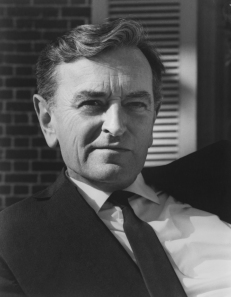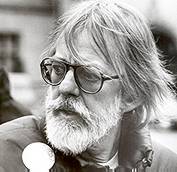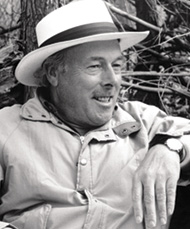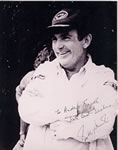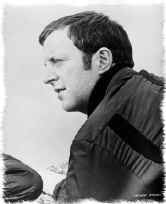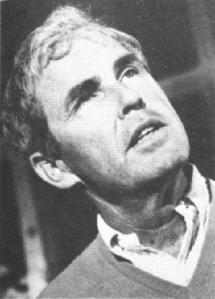When you think about Italian cinema, several names generally come to mind: Fellini, Visconti, de Sica, Bertolucci and possibly even Benigni. One name that is rarely mentioned in cinema circles, but whom is one of my favorite Italian directors, is Pietro Germi. Germi, unlike some auteurs, was able to expertly master the mechanics of both comedies and dramas, while all the time keeping his own style evident throughout. Even a couple years ago as Wikipedia was becoming very popular, Germi still hadn’t an article on his life and career. The article that is currently live for him on the site is one that I took the time to write myself.
Germi was born in Genoa, Italy in 1914. After a brief excursion into nautical school, he decided to enter the film industry. He attended film school in Rome and performed many functions on various sets including acting, assistant directing and occasionally writing during his youth. His first film as a director was The Testimony in 1946. Following this film, he released a film every year or two for the next 25 years as a director and, more often then not, served as either writer or co-writer as well.
Germi’s first films were in the Italian neo-realist style with a deep rooting in dramatic content. For those of you who are unfamiliar with the neo-realist style, it generally covered topics that were true-to-life and the protagonists were generally the everyman type. In addition, the films were generally shot in natural locations as opposed to shooting in a studio and the cinematography and direction had a grittier, more realistic style to it than a polished Hollywood film. Most all of his output during the 1950s was in this style and focused on dramatic content, though he would later be more known for his comedic efforts. Just to give you a Germi starter kit so to speak, I’ll recommend three of his films that I feel will get you on your way to either liking or deciding that Germi’s work is not for you.
One of my favorite films from Germi’s dramatic material is 1956’s The Railroad Man. In addition to writing and directing, Germi also played the lead role of Andrea Marcocci. Andrea is, as the title suggests, a railroad worker. He is happy in his career and spends many a night drinking with his fellow workers after getting off the job. However, after nearly colliding with another train while trying to avoid someone attempting suicide on the tracks, Marcocci is laid off. Further misfortune begins to complicate his life after this incident, and between his problems at work, his drinking and troubles in his family life, Marcocci’s mood gets more and more despairing. However, his youngest son Sandro (Edoardo Nevola), wants to help his father and through Sandro’s love and support his father is able to find some form of peace. The film is a complex study of the everyman through the life of this common railroad worker. It touches on the human emotion on every level throughout the film and is an outstanding example of the Italian neo-realist style.
In 1961, Germi moved into comedic material and would stay in this genre for the majority of his career following. The film, Divorce, Italian Style, would be his greatest success, winning him a Best Original Screenplay Academy Award and garnering a nomination for Best Director. The film tells the story of Sicilian nobleman Ferdinando Cefalù, played with precision by famous Italian actor Marcello Mastroianni, who hopes to marry his beautiful cousin Angela (Stefania Sandrelli). The problem, however, is that he is already married to Rosalia, and in Sicily at the time it was illegal to get a divorce. Determined to succeed, Ferdinando tries to manipulate a plan to get his wife caught up in an affair; then, when he “finds” her in the act, murder her and only receive a short sentence for an honor killing. Mastroianni is brilliant in the part of Ferdinando and the film overall has amazing timing for comedic effect. Following the international success of this film, many Italian comedies of the 1960s tried to emulate Germi’s style and there were a few direct off shoots of this movie.
The last Germi film I’ll go into detail on is his 1963 film Seduced and Abandoned. It directly relates in style and mood to his previous film Divorce, Italian Style. Agnese Ascalone (Stefania Sandrelli) is the daughter of a prominent Sicilian miner, Vincenzo. She is found in the kitchen by Vincenzo and her mother being seduced by her sister’s fiancee, Peppino. To uphold strict Sicilian mores, Vincenzo demands Peppino marry Agnese instead. The resulting demand leads the story through one hilarious situation after another. Saro Urzi, who plays Vincenzo, was perfect for this role as the frustrated, comical patriarch. In America, he is probably best known for playing Signor Vitelli in Francis Ford Coppola’s The Godfather.
Unfortunately, Germi would pass in 1974 from hepatitis at the age of 60. His last film was the mediocre Alfredo, Alfredo with Dustin Hoffman and favorite muse Stefania Sandrelli. There are many other films in this brilliant Italian director’s repertoire worth seeing, but if you just want a tast of his comedic and dramatic style, then I feel these three films are a good place to start. In my opinion, Germi’s abilities as a writer and director were as reputable as any of the other illuminaries of Italian cinema and hope his work will reach a wider audience in years to come.










